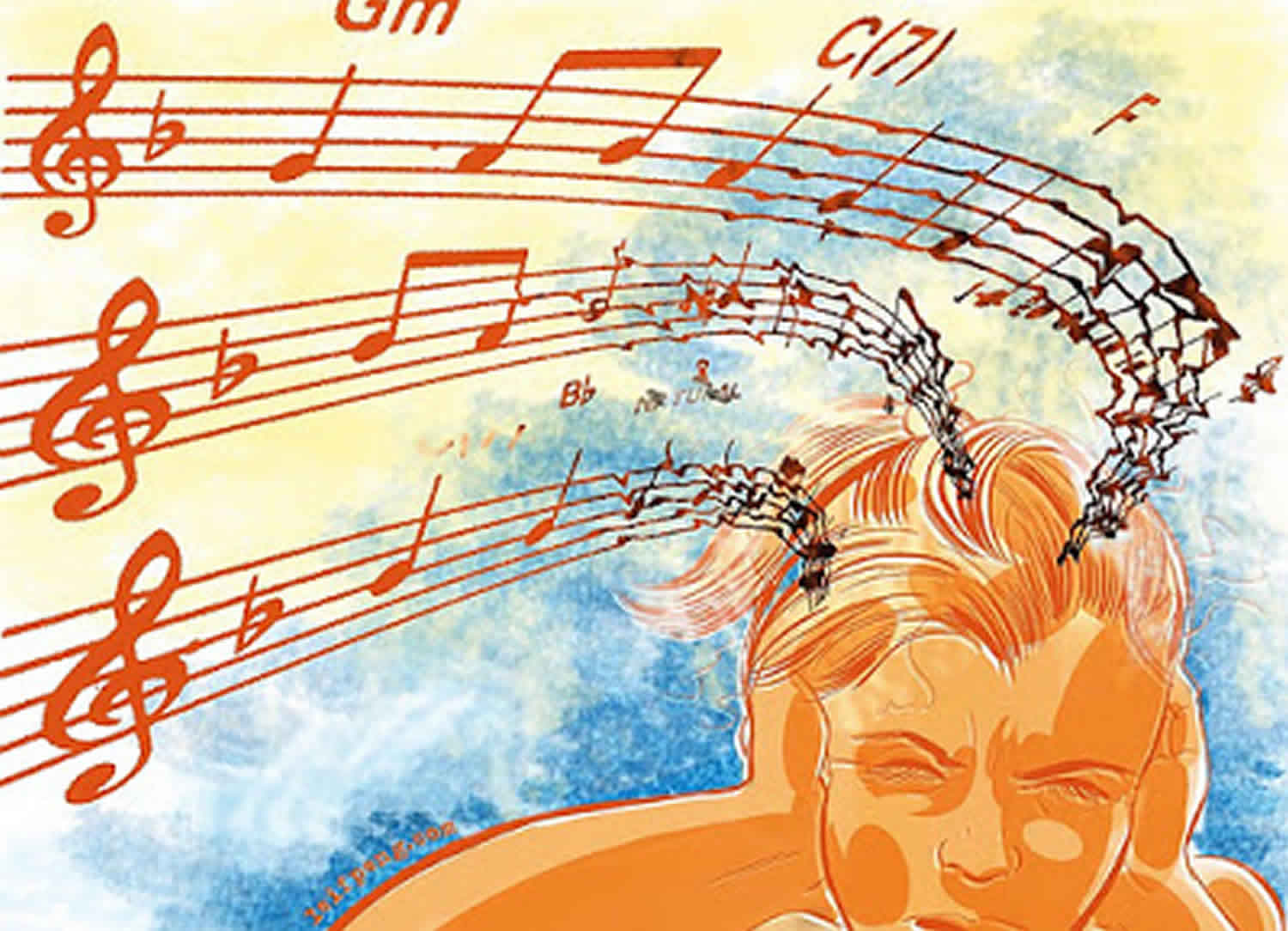Music Therapy
 Graphics courtesy of Health JadeOpens in new window
Graphics courtesy of Health JadeOpens in new window
Music is able to influence and evoke emotions. It seems to offer a unique means of communication—rooted in emotion—that can bypass the need for verbal expression. Music conveys certain emotions across cultures. |
Emotion recognition and processing in music involves several brain structures, including those involved in emotion, cognition (thinking), motor (movement), speech and language (sounds), and spatial processing.
Amusia is a condition in which ability to perceive and enjoy music is impaired. Amusia can be caused by brain damage (e.g., stroke, epilepsy, or traumatic brain injury) or abnormal development (congenital amusia).
Studies of individuals with amusia have provided insight into the brain structures involved with music perception and processing.
A study of stroke patients found that patients with amusia had a higher incidence of damage to the frontal lobe and auditory cortex of the brain. It was also found that patient’s music perception abilities returned as they recovered their verbal learning, visuospatial processing, and attention abilities, indicating the close link between musical perception and other cognitive processing abilities.
Patients with temporal lobe epilepsy showed decreased ability to distinguish happy and sad music, depending on which side of the brain was damaged. This study showed that brain regions on the right and left side were involved in recognizing different emotions in music (Khalfa et al., 2008).
Functional magnetic resonance imaging (fMRI) studies have shown that neural systems in the right hemisphere of the brain are necessary to process the pitch, melody, harmony, and structure of music.
A study exposing newborn infants (one to three days old) to music found that the same brain regions were activated in infants as in adults, primarily in the right hemisphere of the brain.
When dissonant (unpleasant) music was played, brain systems on the left side (inferior frontal cortex and limbic structures) were activated, as in adults. This study showed that the brain structures used to process music are present at birth (Perani et al., 2008).
The brain’s responses to music may depend on the experience and training of the listener. Brain studies with musicians have provided evidence of the brain’s ability to form new connections in response to musical activities. Musicians (with years of musical training) show increased development of brain regions (e.g., auditory and motor cortrices) over the brains of nonmusicians (Weinberger, 2004).
Music therapy has been used to reduce stress, anxiety, and pain. It has also been used as a treatment for specific disorders, including traumatic brain injury. Imaging studies have shown that many different brain areas are used in music processing and that music processing involves collaboration between the right and left hemispheres of the brain.
Therapy involving music encourages communication among different regions and hemispheres and may help forge new brain connections. Research shows that music therapy stimulates cognitive functions, improves mood, and reduces anxiety, depression, and aggression in some disorders (Guetin, Soua, Voirior, Picot, & Herisson, 2009).
See also:
- Fritz, T., Jentschke, S., Gosselin, N., Smamler, D., Peretz, I., Turner, R., et al. (2009). Universal recognition of three basic emotions in music. Current Biology, 19, 573 – 576.
- Guetin, S., Soua, B., Voiriot, G., Picot, M. C., & Herisson, C. (2009). The effect of music therapy on mood and anxiety-depression: An observational study in institutionalized patients with traumatic brain injury. Annals of Physical and Rehabilitation Medicine, 52, 30 – 40.
- Heaton, P., Allen, R., Williams, K., Cummins, O., & Happe, F. (2008). Do social and cognitive deficits curtail musical understanding? Evidence from autism and Down syndrome. British Journal of Developmental Psychology, 26(Part 2), 171 – 182.
- Khalfa, S., Guye, M., Peretz, I., Chapen, F., Girard, N., Chauvel, P., et al. (2008). Evidence of lateralized anteromedial temporal structures involvement in musical emotion processing. Neuropsychologia, 46, 2485 – 2493.
- Perani, D., Saccuman, M.C., Seifo, P., Spada, D., Andreolli, G., Rovelli, R., et al. (2008, July 23). Music in the first days of life.
- Weinberger, N.M. (2004). Music and the brain. Scientific American, 291, 88 – 95.
- Mithen, S. (2006). The singing Neanderthals: The origins of music, language, mind, and body. Cambridge, MA: Harvard Univeristy Press.

